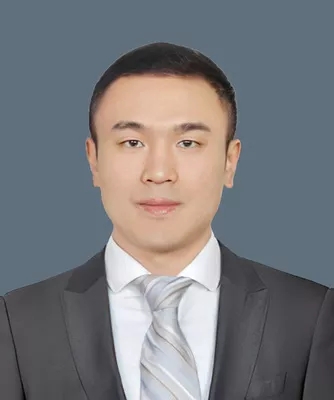夏威
助理教授
甬江人才、深圳市海外高层次人才、2023“全球前2%顶尖科学家”
wxia@eitech.edu.cn

背景介绍:
夏威,宁波东方理工大学助理教授、副研究员、博士生导师(独立PI),上海交通大学兼职博导。2016年获北京大学力学(先进材料与力学)博士学位,曾在加拿大西安大略大学、南方科技大学担任博士后和副研究员。主要从事全固态电池和中子散射技术研究,开发了新型反萤石结构固态电解质,参与中子大科学装置建设。已在Nat. Commun.、J. Am. Chem. Soc.、Angew. Chem.、Energy Environ. Sci.、Adv. Mater.、npj Comput. Mater.、Nano Lett.、Chem. Rev.等国际著名学术期刊发表论文60余篇,总被引8800余次,H因子33。主持国自然面上、青年基金等项目,参与国自然合作创新研究团队、区域联合基金等项目。曾就职世界五百强企业电池研发部门,具有电池研发和工程化经验。获甬江人才、深圳市海外高层次人才,入选斯坦福大学和爱思唯尔联合发布的“全球前2%顶尖科学家榜单”。
研究领域:
全固态电池、中子散射、晶体材料自动化合成与结构解析
教育背景:
2011-2016:北京大学,力学(先进材料与力学),博士
2014:美国阿贡国家实验室,访问学生
2007-2011:北京科技大学,材料科学与工程实验班,学士
工作经历:
2022.07-至今,宁波东方理工大学,理学部,助理教授
2022.02-2022.06,南方科技大学,前沿与交叉科学研究院,副研究员
2019.09-2022.02,加拿大西安大略大学,机械与材料工程系,访问学者&博士后
2019.03-2019.09,南方科技大学,前沿与交叉科学研究院,副研究员
2016.07-2019.02,世界五百强企业电池研发部门,工程师A
学术兼职(部分):
Carbon Neutralization青年编委
Nature Communications、Matter、Advanced Energy Materials等期刊审稿人
获奖情况及荣誉:
2023:全球前2%顶尖科学家
2023:甬江人才
2021:深圳市海外高层次人才(C类)
2016:北京大学优秀博士学位论文
2016:北京市普通高等学校优秀毕业生
2016:北京大学优秀毕业生
2016:北京大学工学院“学术十杰”
代表性论著:
总体情况
60余篇 SCI论文;1部主要专著
引用超过8800次,H因子33,有7篇第一作者论文入选ESI高引论文
Google Scholar:
https://scholar.google.com/citations?user=0jTpNa4AAAAJ&hl=zh-CN
Web of Knowledge:
https://www.webofscience.com/wos/author/record/1887572
10篇代表作(*表示通讯作者,‡表示共同一作)
[1] Meng Li, Haoxiang Zhuo, Jiuwei Lei, Yaqing Guo, Yifei Yuan, Kuan Wang, Zhou Liao, Wei Xia*, Dongsheng Geng*, Xueliang Sun*, Jiangtao Hu*, Biwei Xiao*, Unravelling the structure-stability interplay of O3-type layered sodium cathode materials via precision spacing engineering, Nature Communications, 2025, 16, 2010.
[2] Hailun Jin, Jiuwei Lei, Fiaz Hussain, Wen Tang, Chunlei Zhao, Pengcheng Yu, Yuhang Li, Ming Liu, Jiaxu Zhang, Wen Yin, Wei Xia*, Yusheng Zhao, Regulating chemical bonds in halide frameworks for lithium superionic conductors, ACS Nano, 2025, 19(6), 6399-6411.
[3] Pengcheng Yu, Haochang Zhang, Fiaz Hussain, Jing Luo, Wen Tang, Jiuwei Lei, Lei Gao, Denys Butenko, Changhong Wang, Jinlong Zhu, Wen Yin, Hao Zhang, Songbai Han*, Ruqiang Zou*, Wei Chen, Yusheng Zhao, Wei Xia*, Xueliang Sun*, Lithium metal compatible antifluorite electrolytes for solid-state batteries, Journal of the American Chemical Society, 2024, 2024, 146(18): 12681-12690.
[4] Jin-Xiu Chen, Jin-Hao Zhang, Xiao-Zhong Fan, Fang-Fang Wang, Wen Tang, Wei Xia*, Yusheng Zhao*, Long Kong*, Solvating lithium and tethering aluminium using di-coordination-strength anions for low-temperature lithium metal batteries, Energy & Environmental Science, 2024, 10.1039/D3EE03809B.
[5] Fiaz Hussain, Jinlong Zhu*, Yusheng Zhao, Wei Xia*, Exploring superionic conduction in lithium oxyhalide solid electrolytes considering composition and structural factors, npj Computational Materials, 2024, 10, 148.
[6] Wei Xia‡, Yang Zhao‡, Feipeng Zhao‡, Keegan Adair, Ruo Zhao, Shuai Li, Ruqiang Zou*, Yusheng Zhao*, Xueliang Sun*, Antiperovskite electrolytes for solid-state batteries, Chemical Reviews, 2022, 122(3): 3763-3819.
[7] Hao Zhang‡, Wei Xia‡, Haoming Shen, Wenhan Guo, Zibin Liang, Kexin Zhang, Yingxiao Wu, Bingjun Zhu, Ruqiang Zou*, Antiperovskite intermetallic nanoparticles for enhanced oxygen reduction, Angewandte Chemie International Edition, 2020, 59(5): 1871-1877.
[8] Wei Xia‡, Chong Qu‡, Zibin Liang, Bote Zhao, Shuge Dai, Bin Qiu, Yang Jiao, Qiaobao Zhang, Xinyu Huang, Wenhan Guo, Dai Dang, Ruqiang Zou*, Dingguo Xia*, Qiang Xu*, Meilin Liu*, High-performance energy storage and conversion materials derived from a single metal-organic framework/graphene aerogel composite, Nano Letters, 2017, 17(5): 2788-2795.
[9] Wei Xia, Asif Mahmood, Zibin Liang, Ruqiang Zou*, Shaojun Guo*, Earth-abundant nanomaterials for oxygen reduction, Angewandte Chemie International Edition, 2016, 55(8): 2650-2676.
[10] Wei Xia, Ruqiang Zou*, Li An, Dingguo Xia, Shaojun Guo*, A metal-organic framework route to in situ encapsulation of Co@Co3O4@C core@bishell nanoparticles into a highly ordered porous carbon matrix for oxygen reduction, Energy & Environmental Science, 2015, 8(2): 568-576.





